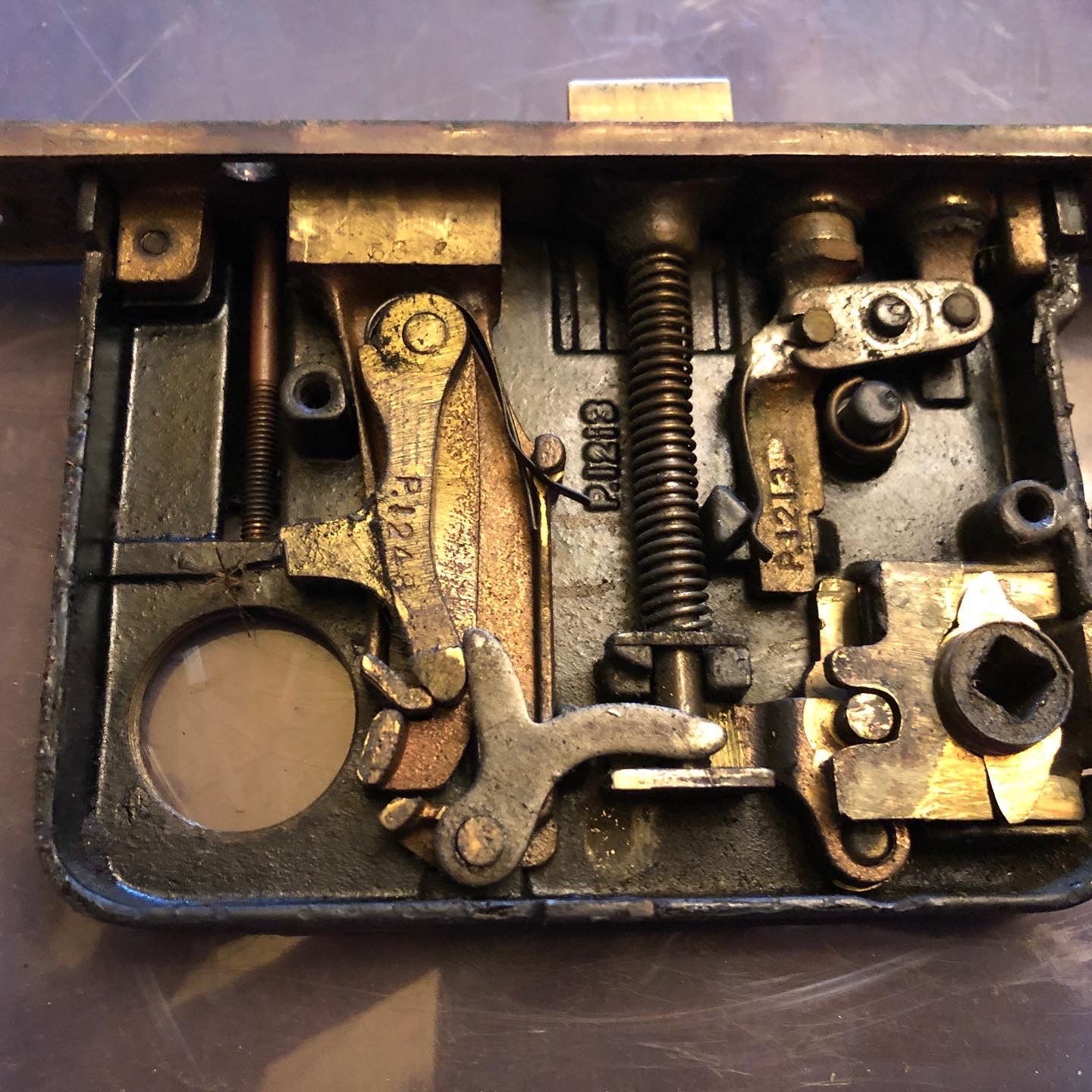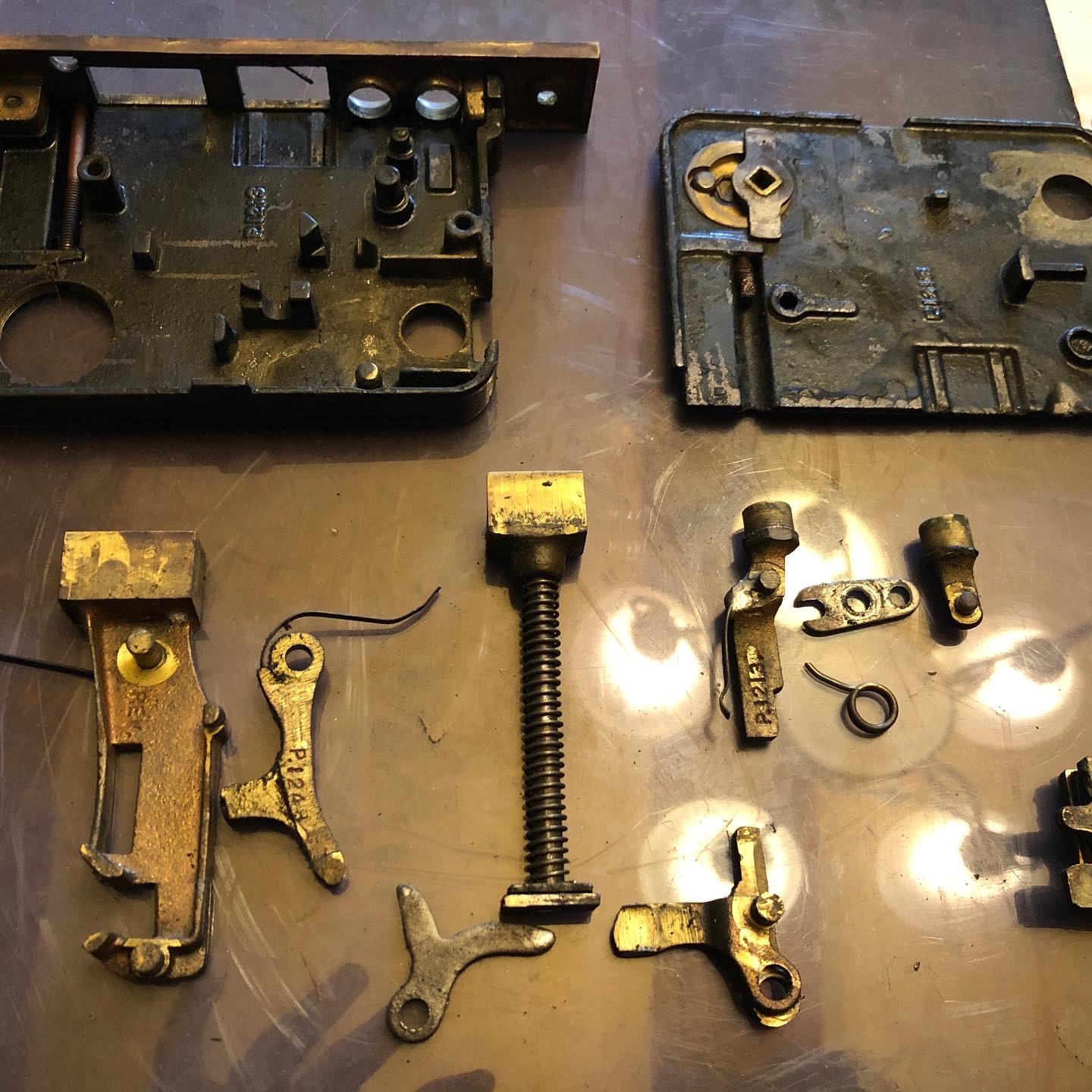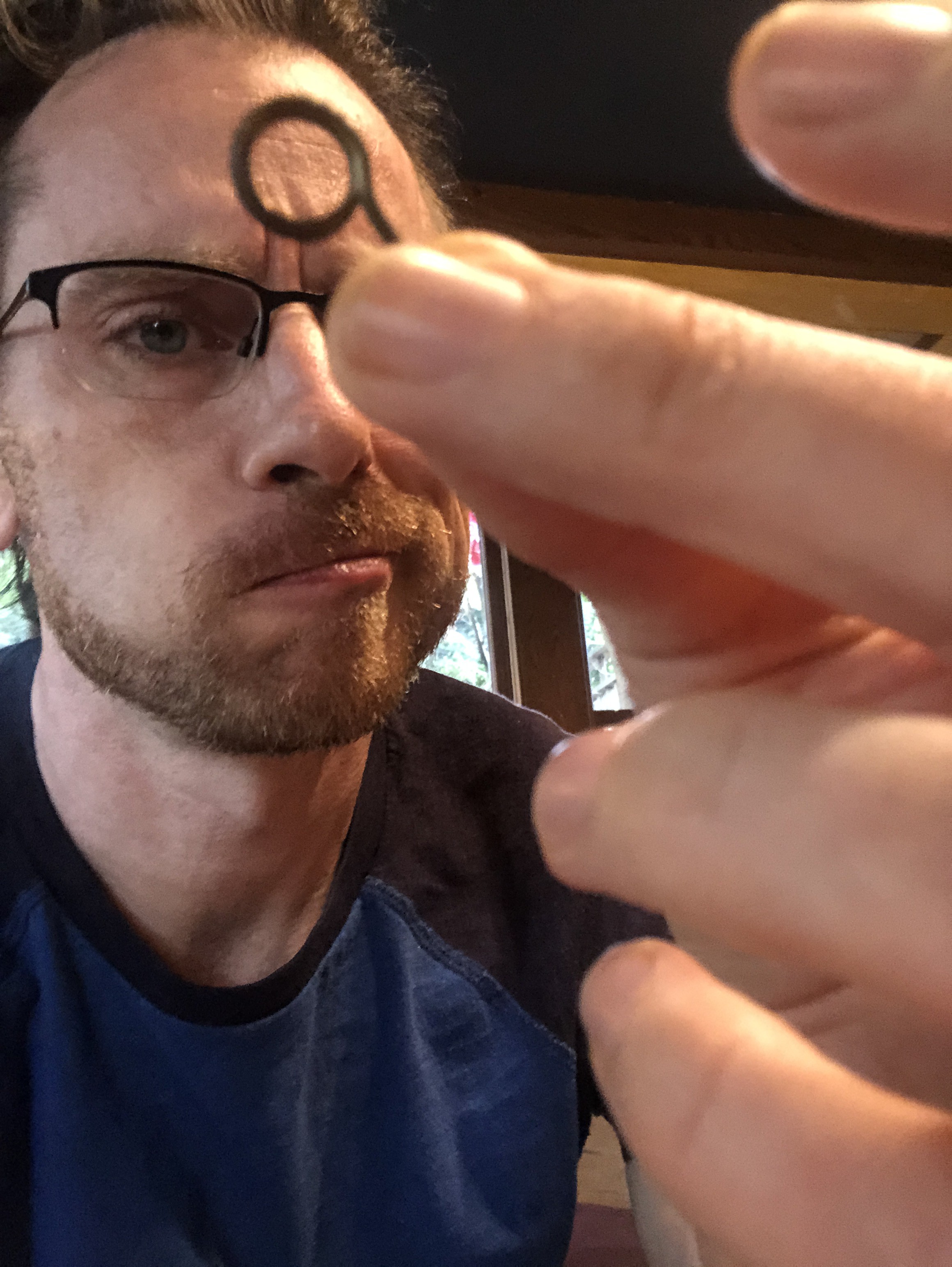Just clean the lock, that should fix everything, right? How hard could it be?
The latch on the 100-year-old Russwin 1213 mortise lock was sticking in the open position and it seemed like all it would need is a good cleaning and lube.
My plan was simple:
- Open the lock
- Take a picture of the internals, so I remember how to put it back together.
- Take everything out.
- Clean them with WD40 and acetone to get all the gunk off.
- Lube everything up with graphite dry lubricant.
- Put it back together.

Step 1 and 2 complete.

Step 3 and 4. Clean all the things!

Find a broken spring. Wait, which step was that supposed to be?
New step #7: Hope everything works when I put it back together. What would your bet be?
Well, after getting it back together, it worked a little better but the latch was still sticking. Time to learn more about this lock...
 Jeremy
Jeremy
Discussions
Become a Hackaday.io Member
Create an account to leave a comment. Already have an account? Log In.
ahan nice
Are you sure? yes | no
You're welcome! For that matter I wouldn't use graphite in a key cylinder either. Dry teflon is good for those too-just a one second squirt. I was a locksmith on and off for over 40 years, and Northeastern Ohio has a LOT of old housing stock, so I worked on more mortise locks than I could count. Those are still made and can be very costly.
Are you sure? yes | no
I would use dry teflon spray because it isn't as messy. Those springs may be 100 years old. I would check them all, especially the one in the cam disc that throws the bolt from the inside. New ones are available. Check that the bolt isn't bent, too.
Are you sure? yes | no
Thanks for the tips. (the graphite is messy!) This is my first time working around an old lock, so I'll take any recommendations you have!
Are you sure? yes | no